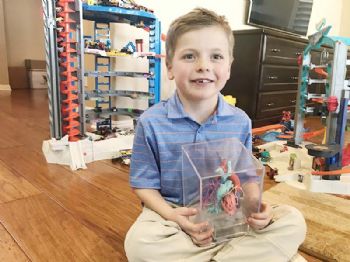
Before seven-year-old Lincoln Matthews underwent his most recent heart surgery at Rady children’s Hospital in San Diego (California), the doctors had a 3-D printed replica of the boy’s heart with which to ‘practice’ the procedure.
Lincoln was born with just one working ventricle and a hole in the place of the other; his heart was also tilted to the opposite side of his chest. However, the three-dimensional life-size model detailed every valve, vein and artery, allowing the doctors to determine exactly how they could best reroute the blood flow.
The 3-D model was created by Justin Ryan, director of Rady Children’s Hospital’s new 3D Innovations Lab — one of the first of its kind in Southern California.
Mr Ryan said: “In this patient’s heart, there is a hole that can be seen deep inside the model; and exactly how big that hole is can change the course of surgical correction.
"The surgeons need to know exactly how big the patch has to be and exactly where it needs to go; and with regard to the myriad of tiny blood vessels, we can identify which ones might be more critical to save and which ones can be
sacrificed in order to help flow to other regions.”
The data that allows Mr Ryan to create a 3-D computer model, which then gets sent to a 3-D printer, comes from a CT scan, MRI or 3-D ultrasound.
“Some models are printed in colour to make it easier for patients and their families to understand the diagnosis and surgery plan.
“The colours also help surgeons differentiate who is going to work on which part.”
John Nigro, chief of Rady Children’s cardiac surgery (
www.rchsd.org), said: “Analysing models helps us understand what the optimal approach is to repairing a defect.
"Before such models were available, we still had a sound plan of how we would undertake a procedure, but once under way, we might find matters were not as we had anticipated.
“The models help reduce the risk of surgery to the child, by reducing the time that a child is on the bypass machine and in the operating room.”